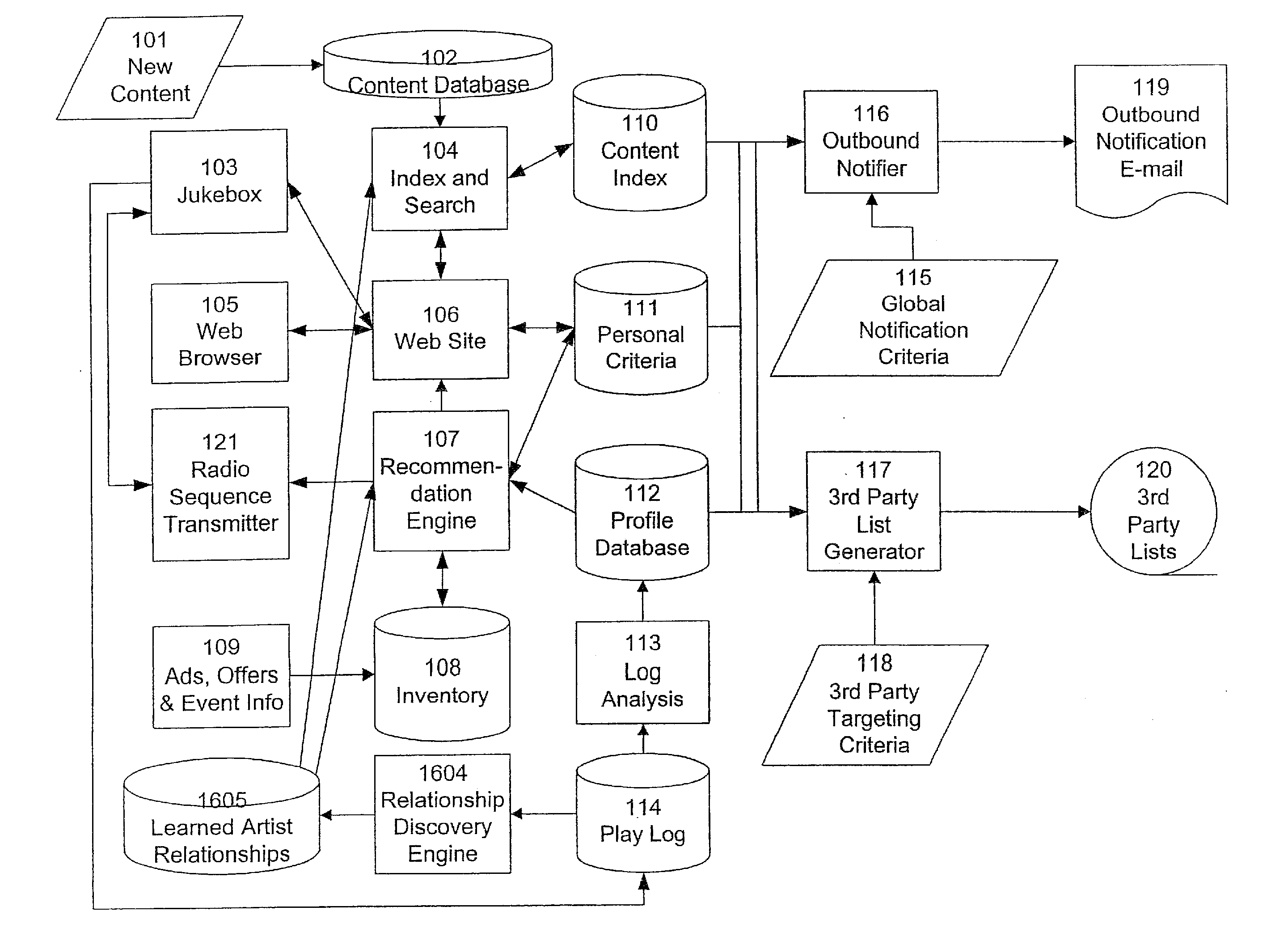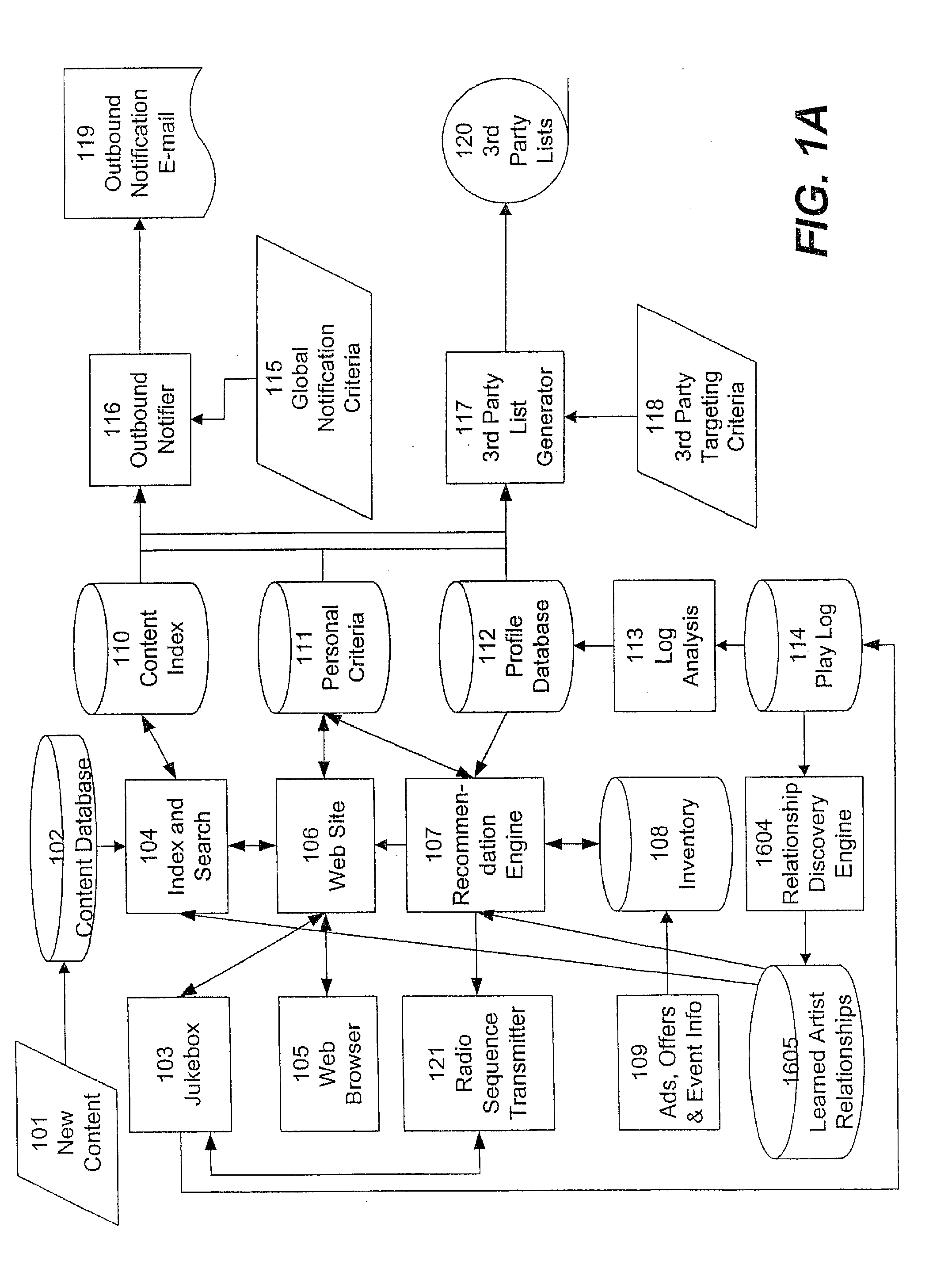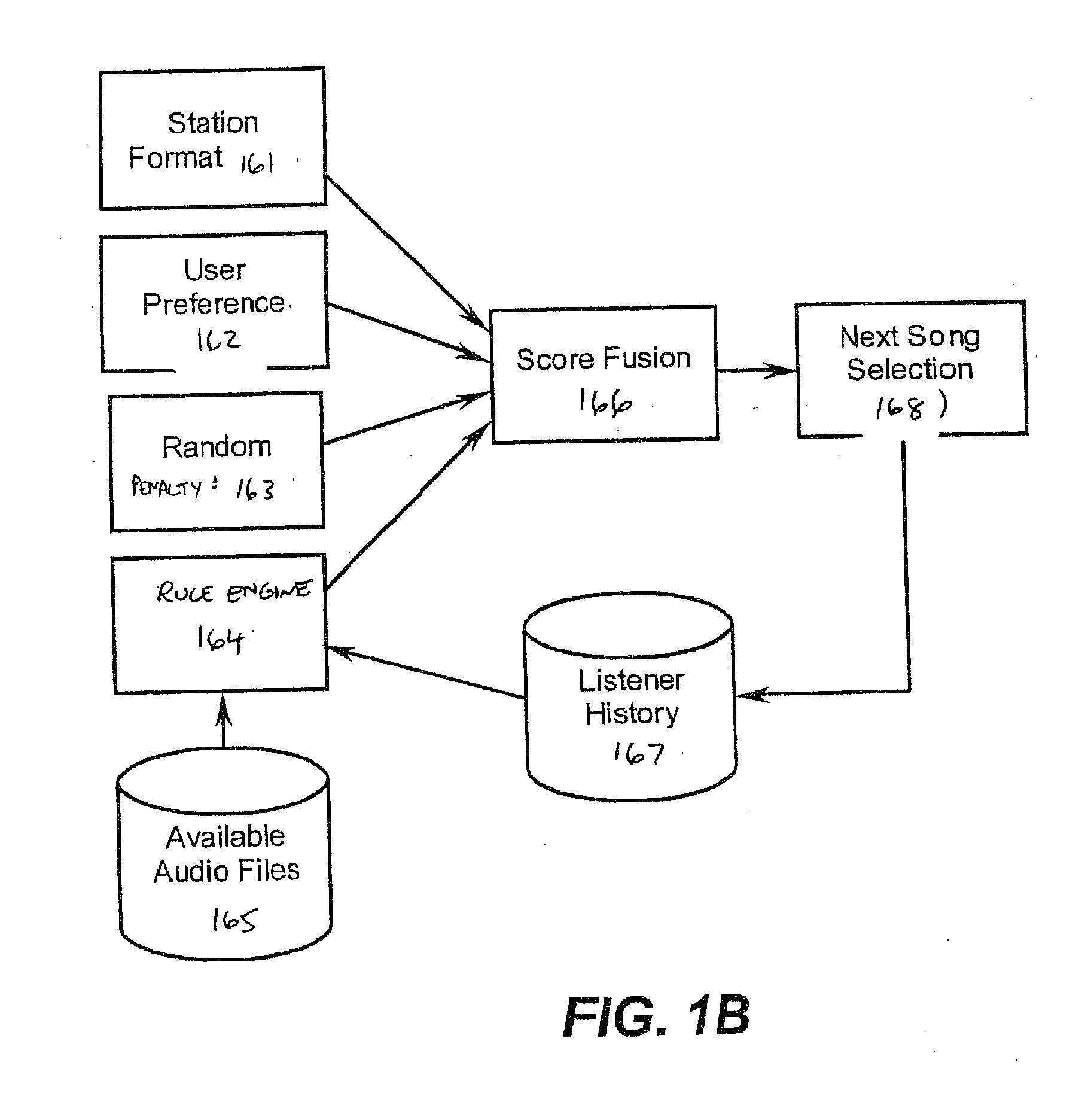Relationship discovery engine
a technology of relationship discovery and engine, applied in the field of relationship discovery engine, can solve the problems of many users being reluctant to complete such online questionnaires, users being unable to accurately collect user preference information, and users being unable to accurately answer questions, etc., to achieve the effect of improving marketing and ad targeting, facilitating recommendation generation, and improving the credibility and utility of the recommendation system
- Summary
- Abstract
- Description
- Claims
- Application Information
AI Technical Summary
Benefits of technology
Problems solved by technology
Method used
Image
Examples
Embodiment Construction
[0081]The following description of preferred embodiments of the present invention is presented in the context of an online recommendation engine for music tracks, such as may be implemented in an Internet-based jukebox or personalized radio station. One skilled in the art will recognize that the present invention may be implemented in many other domains and environments, both within the context of musical recommendations, and in other contexts. Accordingly, the following description, while intended to be illustrative of a particular implementation, is not intended to limit the scope of the present invention or its applicability to other domains and environments. Rather, the scope of the present invention is limited and defined solely by the claims.
Architecture
[0082]Referring now to FIG. 16, there is shown a conceptual architecture of one embodiment of the present invention. In the architecture of FIG. 16, the invention is implemented in connection with a web-based “jukebox”103, or p...
PUM
 Login to View More
Login to View More Abstract
Description
Claims
Application Information
 Login to View More
Login to View More - R&D
- Intellectual Property
- Life Sciences
- Materials
- Tech Scout
- Unparalleled Data Quality
- Higher Quality Content
- 60% Fewer Hallucinations
Browse by: Latest US Patents, China's latest patents, Technical Efficacy Thesaurus, Application Domain, Technology Topic, Popular Technical Reports.
© 2025 PatSnap. All rights reserved.Legal|Privacy policy|Modern Slavery Act Transparency Statement|Sitemap|About US| Contact US: help@patsnap.com



